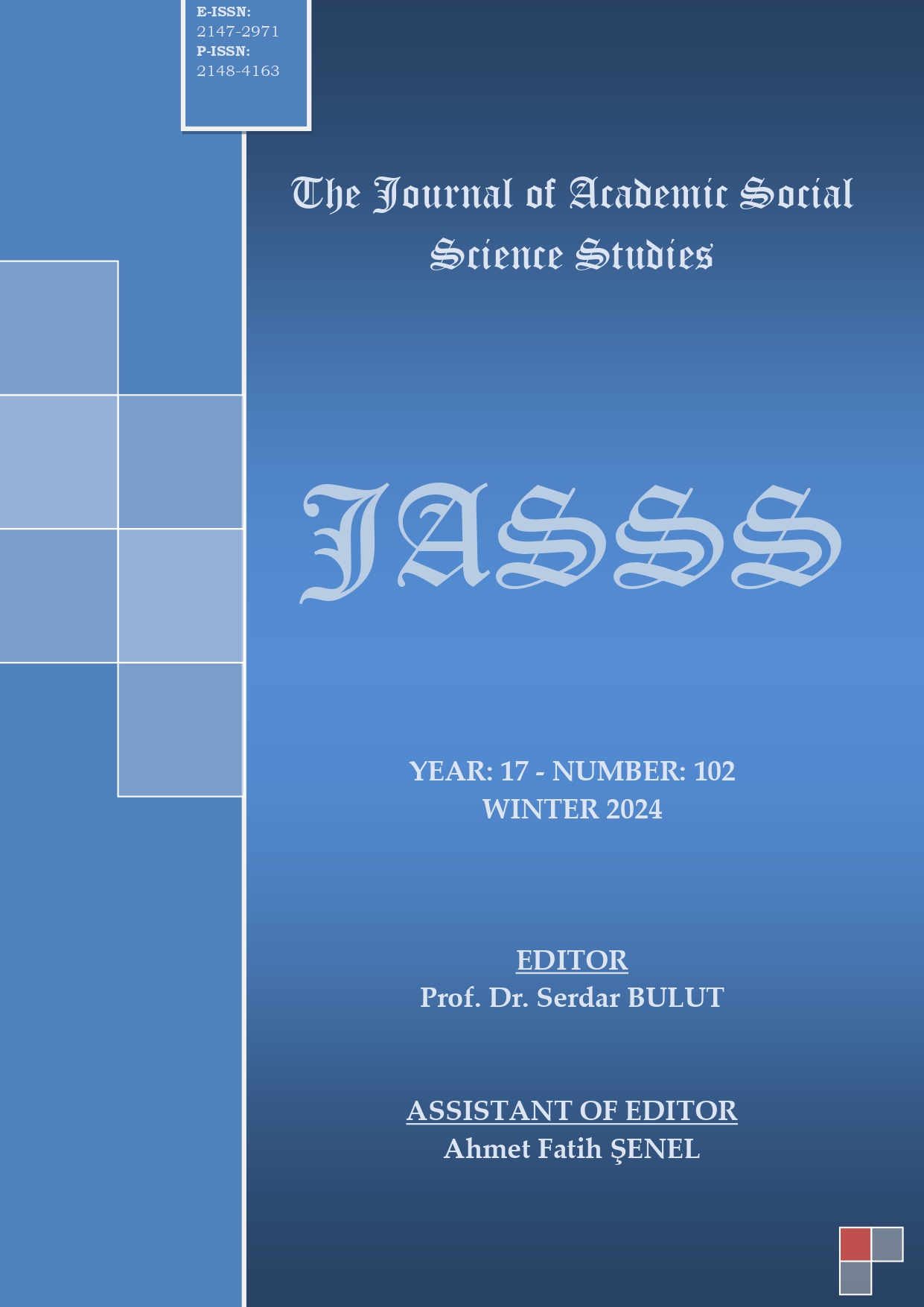CESAR FRANCK’IN PRELÜD, KORAL VE FÜG ADLI ESERİNİN MÜZİKAL ANALİZİ VE PİYANO İCRA PRATİĞİ AÇISINDAN DEĞERLENDİRİLMESİ
Author :
Abstract
Bu araştırma, Cesar Franck’ın Prelüd, Koral ve Füg adlı eserinin müzikal analizini ve piyano icra pratiği açısından değerlendirilmesini amaçlamaktadır. Yöntem olarak betimsel araştırma ve içerik analizi kullanılmıştır; böylece eserin form, armoni ve tematik yapısı incelenmiş, icra teknikleri ve yorum önerileri sunulmuştur.
Eser, üç ana bölümden oluşur. İlk bölüm Prelüd, zengin armonik yapısıyla yoğun bir atmosfer yaratır ve doğaçlama tarzında melodik ifadeler içerir. Prelüd bölümü, yoğun arpejler ve ritmik motiflerle karakterize edilmiştir; icrasında dengeli bir tempo ve dinamik kontrol gerekmektedir. Özellikle arpejlerin temiz ve kontrollü icrası, dramatik etkileri artırmak için önemli görülmüştür. İkinci bölüm Koral, daha sakin ve lirik bir karaktere sahiptir. Koral bölümünde, pedal ve bas uyumunun önemi vurgulanmıştır. Temanın tekrarı ve dinamik değişimlerle bu bölümdeki ifade gücü artırılmaktadır. Son bölüm Füg ise tematik gelişim ve kontrpuantal tekniklerin dinamik bir birleşimini sunar. Füg bölümü ise kontrpuantal yapısıyla motiflerin katmanlar halinde işlendiği bir yapı sunmaktadır. Bu bölümde dinamik geçişler, armonik geçişler ve teknik beceriler dikkatli bir çalışma gerektirmektedir.
Sonuç olarak, eserin döngüsel form yapısı, zengin kromatik yapısı ve kontrpuantal unsurları, piyanistler ve müzikologlar için hem teknik hem de müzikal anlamda önemli bilgiler sunmaktadır. Eser Romantik Dönem’in Barok formlarının yeniden yorumlanmasına dair güçlü bir örnek oluşturmaktadır. Piyano icrasında ifade zenginliğini tam olarak yansıtabilmek için detaylı teknik çalışmaların gerekliliği araştırmada vurgulanmaktadır. Bu bağlamda, eser, sadece piyano repertuvarında değil, aynı zamanda müzikal analiz ve performans pratiği açısından önemli bir eğitim kaynağı olarak değerlendirilmektedir.
Keywords
Abstract
This research aims to analyze César Franck’s Prelude, Chorale and Fugue, focusing on its musical structure and performance practice for piano. Employing descriptive research and content analysis as methodologies, the research examines the work’s form, harmony, and thematic structure, offering performance techniques and interpretative suggestions.
The piece is composed of three main sections. The first section, the Prelude, creates an intense atmosphere with its rich harmonic texture and features melodic expressions in an improvisatory style. Characterized by dense arpeggios and rhythmic motifs, the Prelude demands a balanced tempo and precise dynamic control in performance. In particular, clean and controlled execution of the arpeggios is seen as essential for enhancing the dramatic effect. The second section, the Chorale, possesses a more serene and lyrical character. Emphasis is placed on the importance of pedal and bass alignment in the Chorale, with thematic repetition and dynamic shifts enhancing expressive power. The final section, the Fugue, showcases a dynamic integration of thematic development and contrapuntal techniques. In the Fugue, the layered treatment of motifs through a contrapuntal structure necessitates careful attention to dynamic transitions, harmonic shifts, and technical precision.
In conclusion, the work’s cyclic form, rich chromatic structure, and contrapuntal elements provide significant insights both technically and musically for pianists and musicologists alike. As a compelling example of the Romantic period’s reinterpretation of Baroque forms, this piece underscores the necessity of meticulous technical practice to fully convey its expressive depth in piano performance. In this regard, the work is evaluated as a valuable educational resource, not only within the piano repertoire but also in the fields of musical analysis and performance practice.





